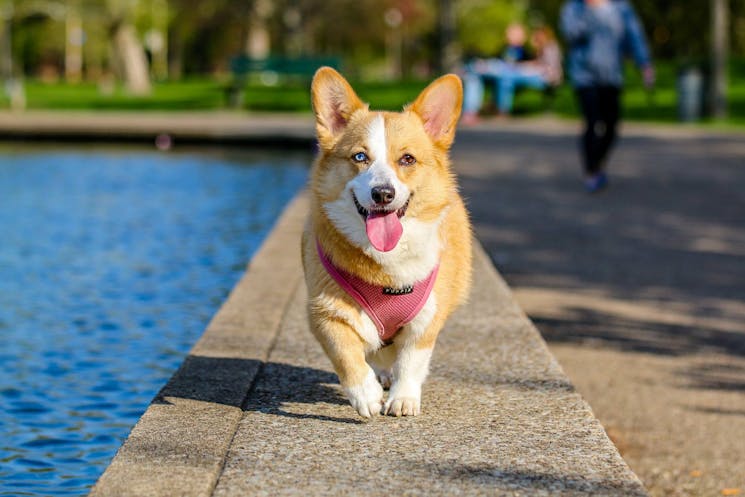Effective dog training plays a critical role in building a healthy and lasting relationship between a pet and its human companions. When your furry friend is well-behaved, you and your dog can enjoy a more harmonious and fulfilling life together. However, dog behavior isn’t just about training commands. It’s about understanding the animal’s needs and providing the right environment for growth. Many people turn to dog care services to help guide their pet’s development, offering a structured setting where behaviors are reinforced in a supportive atmosphere.
Here’s how you can effectively train your canine friend:
Understanding Your Dog’s Needs
Before diving into any training sessions, it’s essential to take a step back and understand your companion’s individual needs. Every dog has a distinct personality and way of learning, and recognizing these differences is key to shaping their behavior. For example, some dogs may respond better to a calm, gentle approach, while others may need a more energetic and interactive environment. Understanding factors such as their energy level, temperament, and past experiences can help tailor the training to suit them. Taking the time to observe your dog will make the process more effective and ensure they stay engaged throughout the learning experience.
Setting Clear Training Goals
One of the first steps in any training journey is setting clear, achievable goals. Knowing what you want to accomplish helps you stay focused and create a roadmap for success. This could be anything from improving basic commands to addressing specific behavioral issues like barking or jumping. Having clear objectives will not only give you a sense of direction but will also help measure progress along the way. Structured environments, such as those found in dedicated dog day care services, can provide you and your companion with the consistency needed to reach these goals. By committing to a routine and engaging in consistent sessions, you will have the chance to build on skills and improve communication.
Consistency is Key
Consistency is perhaps one of the most important factors in shaping your dog’s behavior. Dogs learn best when commands and expectations are the same every time. This means being consistent with what you ask from them and rewarding them for their positive actions in a uniform manner. A regular routine, where commands are given at specific times, and rewards follow desired actions, will help your dog grasp expectations much faster. Additionally, consistency prevents confusion, allowing your pet to know what is expected at any given time. Whether you’re at home or in a controlled environment like a dog daycare, ensuring consistency in your approach is vital for success.
Positive Reinforcement: Rewarding Good Behavior
Positive reinforcement is one of the most effective training techniques available. Instead of focusing on negative behavior, rewarding good actions encourages your dog to repeat the desired behavior. This can be done with treats, praise, toys, or any other form of reward your dog finds motivating. Dogs are social animals, and they thrive when their behavior is acknowledged in a supportive way. The reward should be given immediately after the desired behavior occurs, as this helps reinforce the connection between the action and the reward. By consistently applying this approach, you’ll notice your companion starting to repeat behaviors that earn them praise.
Socializing Your Dog
Socialization is crucial in raising a well-rounded, confident animal. Dogs need to be exposed to various experiences, people, and other animals to build positive associations and prevent fear-based behaviors. Socializing your companion early on can make a big difference in their behavior later in life. Whether it’s meeting new people, interacting with other animals, or exploring different environments, these experiences can help your pet learn how to act calmly and confidently in new situations. If you’re unsure where to start, many services offer group socialization classes or daycare settings where your dog can interact with others in a controlled and safe manner.
Using Command Training Effectively
Teaching your dog basic commands like “sit,” “stay,” and “come” is one of the most important foundations for good behavior. These commands form the basis of communication between you and your dog, ensuring they understand what is expected in various situations. Start by breaking down each command into simple steps, using repetition and patience. Once your companion has mastered the basics, you can progress to more advanced commands. Keep training sessions short and fun to prevent frustration. Additionally, incorporating verbal cues along with hand signals can be effective in reinforcing their learning. Command training helps improve behavior and strengthens the bond between you and your animal, creating a clear line of communication.
Addressing Behavioral Issues
Every dog owner encounters behavioral challenges at some point. Common issues like excessive barking, chewing, or jumping can often stem from boredom, lack of exercise, or poor socialization. It’s essential to address these problems early to prevent them from becoming ingrained habits. To tackle unwanted behaviors, consider redirecting your dog’s attention to more desirable activities. For example, if your dog starts barking excessively, calmly guide them to a quiet spot or use a simple “quiet” command to signal them to stop. Using positive reinforcement for good behavior and remaining consistent with your corrections can help your dog learn the difference between acceptable and unacceptable actions.
Incorporating Mental and Physical Exercises
Training isn’t just about teaching commands – it’s also about providing mental and physical stimulation to keep your dog engaged and healthy. Just like humans, dogs need regular exercise to burn off excess energy and maintain a balanced lifestyle. Take your dog for daily walks, engage in fetch, or even try agility training to keep their mind and body active. Interactive toys or puzzle games can also provide a great mental workout, encouraging problem-solving and focus. Incorporating these exercises into your routine will benefit your dog’s behavior and improve their overall well-being, ensuring they remain calm and happy.
Training your dog takes time, patience, and a commitment to consistency. By understanding your pet’s needs, setting clear goals, and using positive reinforcement, you can help them develop into a well-behaved and confident companion. Remember that socialization, exercise, and the right training methods are essential components of your dog’s overall development. If you ever feel stuck or unsure, working with a professional or enrolling your dog in a structured daycare program can provide the support you need to overcome obstacles. Ultimately, with dedication and the right approach, you’ll see positive results that benefit you and your dog in the long run.













